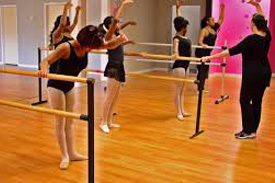 Barre classes are most definitely in vogue at the moment, with both dancers and non-dancers alike engaging in barre-related activities. They can be a challenging workout, but are they beneficial for dancers to partake in? It seems barre can be so much more than a Sunday morning class, and actually an ideal cross-training complement for dancers.
Barre classes are most definitely in vogue at the moment, with both dancers and non-dancers alike engaging in barre-related activities. They can be a challenging workout, but are they beneficial for dancers to partake in? It seems barre can be so much more than a Sunday morning class, and actually an ideal cross-training complement for dancers.
In the late 1950s, a German dancer named Lotte Berk developed the barre technique in her basement studio. After injuring her back in a car accident, Berk healed herself through a routine that combined ballet conditioning with rehabilitative therapy. The Lotte Berk Method opened in New York City in 1971 and, although it closed in 2005, it inspired a number of niche barre methods and studios across the country.
Barre classes can enhance dance performance by improving stamina, strength, flexibility and the mind-body connection. For some barre methods, the class becomes a full-body workout that focuses on body weight and resistance within a small range of motion. It aims to fatigue major muscle groups and stabilise muscles to the point of exhaustion. Barre is generally non-impact, which protects joints, with the muscles worked in a small and controlled manner. This provides enough resistance training that dancers glean all the benefits of weight-bearing exercise.
With barre there is a low risk of injury compared to traditional strength training. Participants are kept in particular positions to isolate muscle groups for longer than in dance class, which encourages the muscles to strengthen through proper form. Lifting weights is important for bone, joint and muscle health, which can make your dance movement stronger and much more safe, but with barre there is a large focus on core stability, which is so vital for all styles of dance. Some exercises even include light hand weights for muscle endurance.
